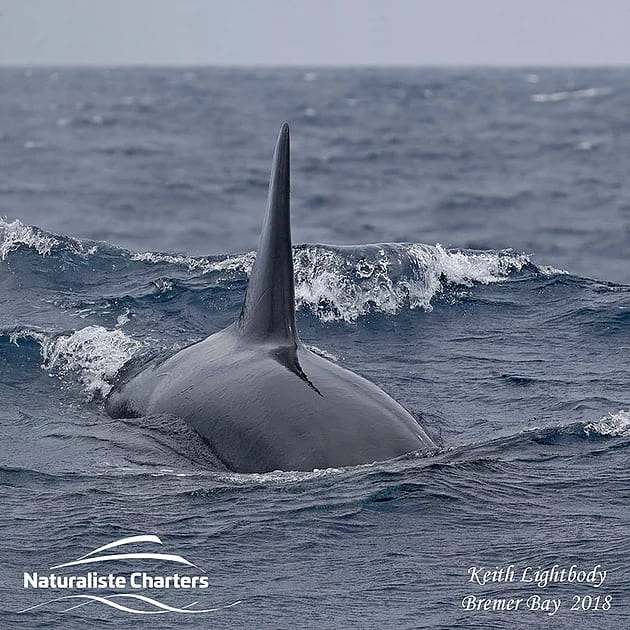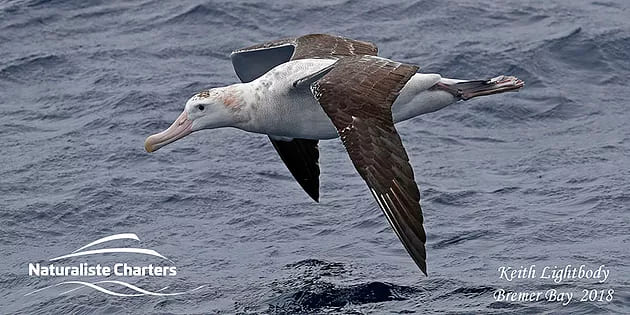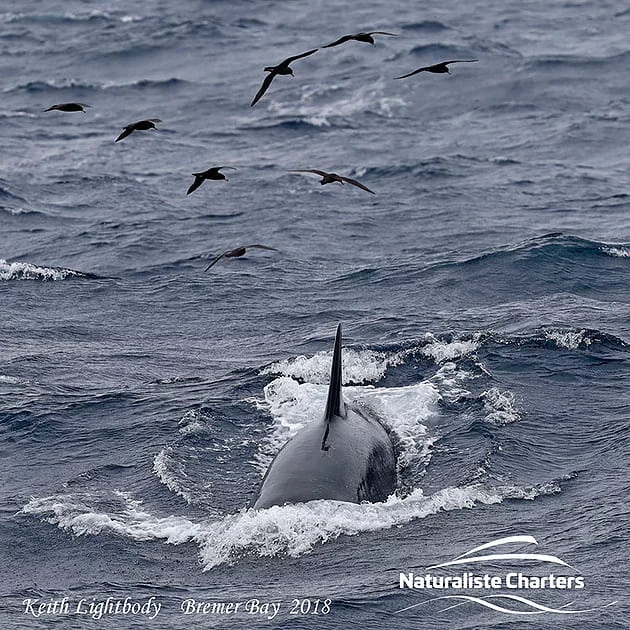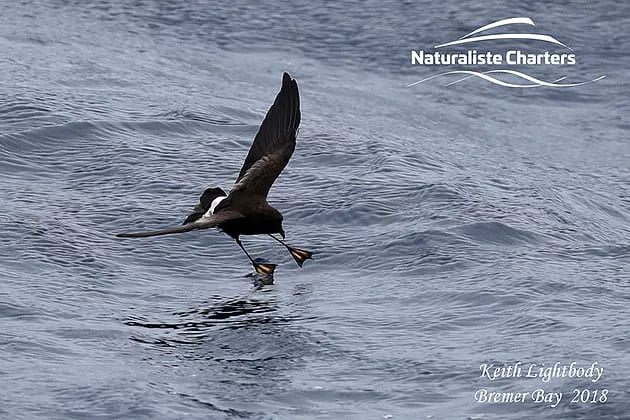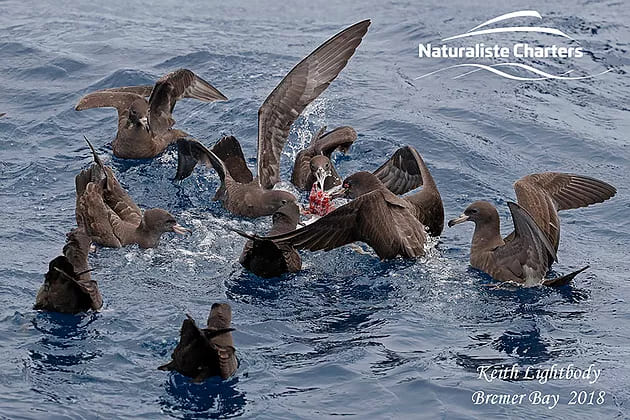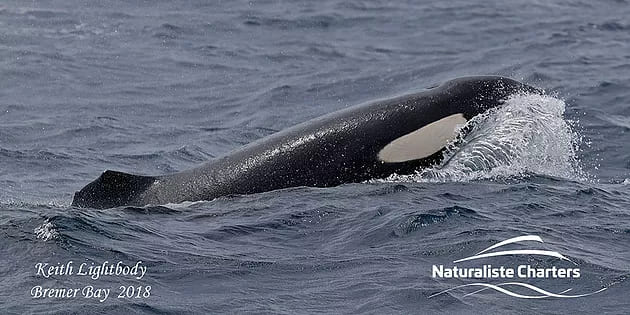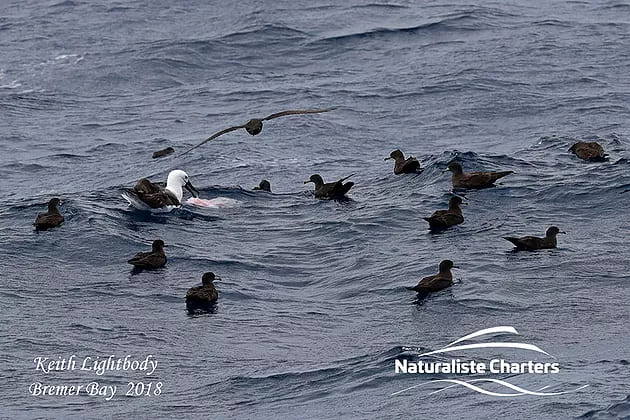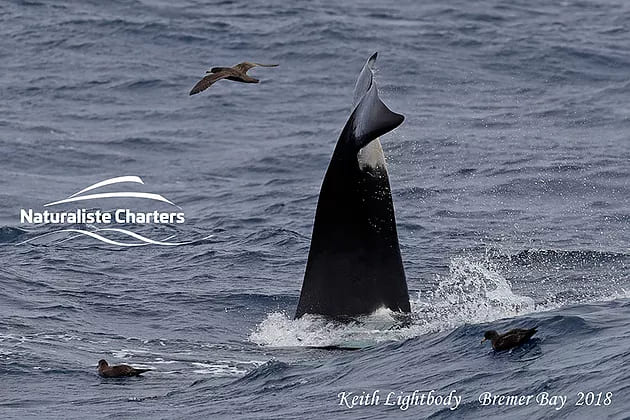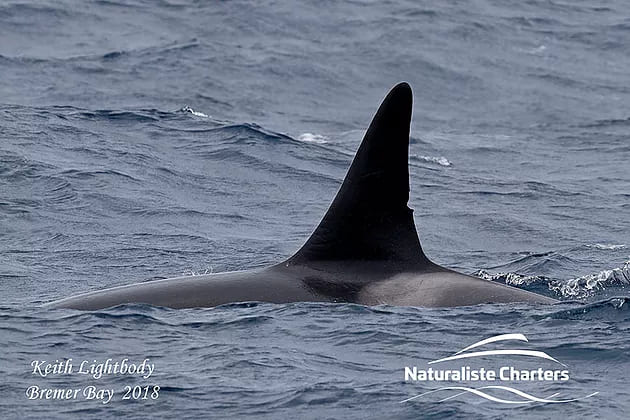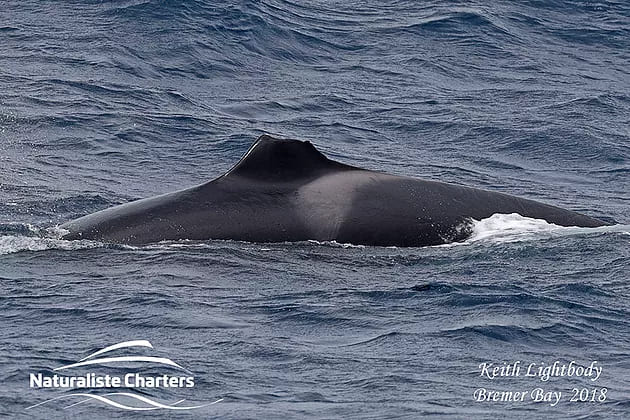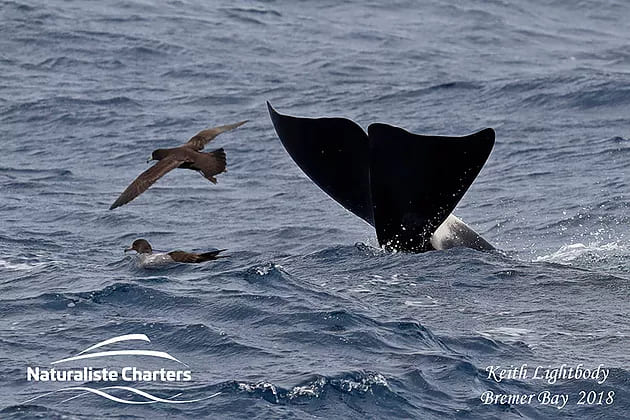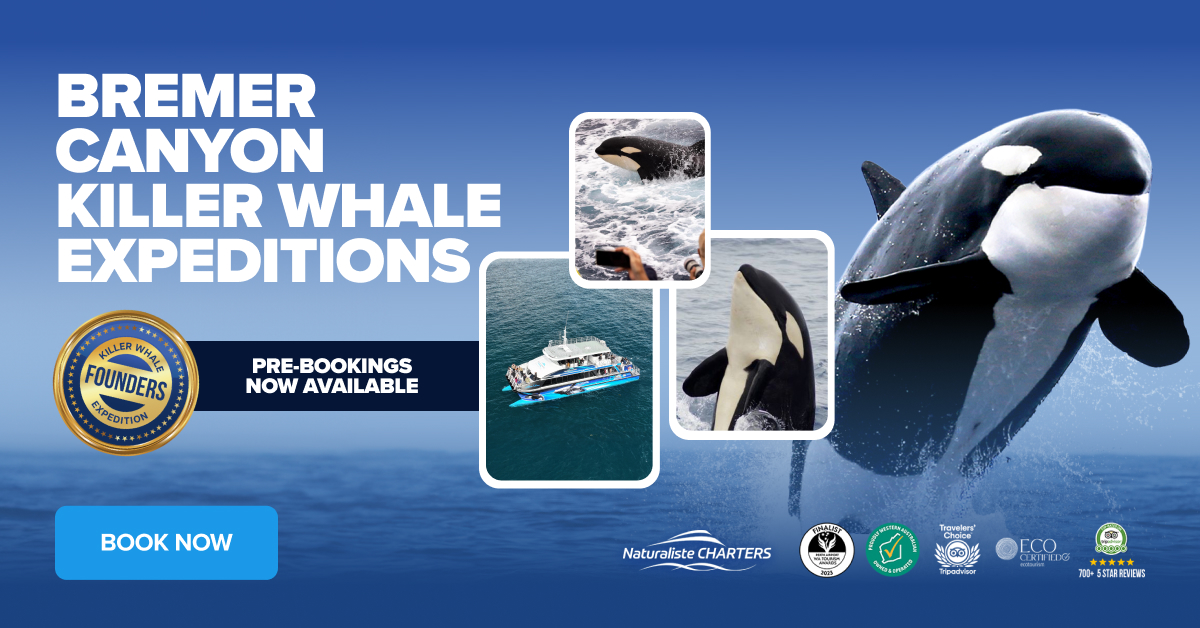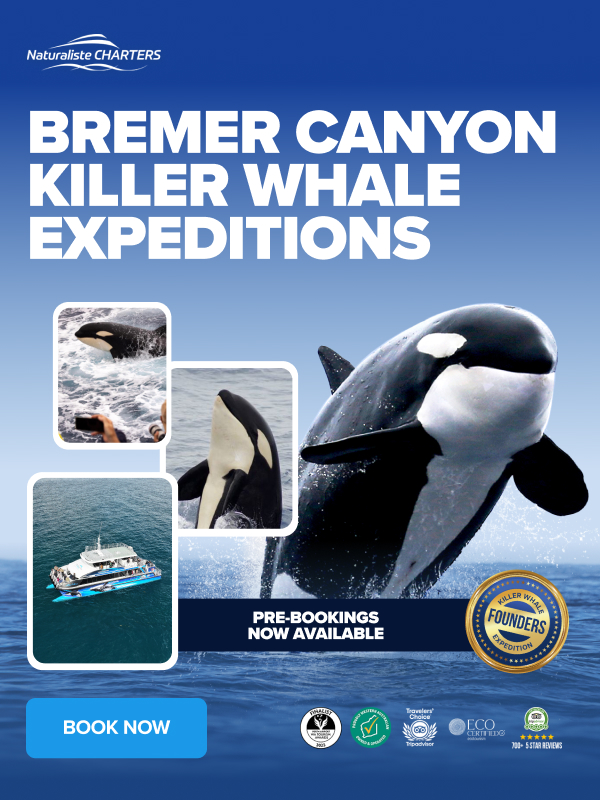Orcas and the Matriline – Lessons from Bremer CanyonA breathtaking start to the day
It felt like we were in the middle of a wildlife documentary on yesterday’s expedition. As we crossed the edge of the continental shelf, excitement rippled through everyone. Seabirds circled in large numbers, and within moments we spotted blows. They were not from one pod of killer whales, but many. Blows surrounded us ahead, to port, and to starboard.
Close encounters with curious orcas
We chose the closest pod and edged toward them. Almost instantly, they altered course and swam directly toward our vessel. Shouts of “incoming” filled the air as they surged through the swells. Rolling on their sides, they gazed up at the watchers on deck. One spy-hopped right beneath the bow, catching even the crew by surprise.
Familiar Fins and New Generations
Recognising old friends
Among the familiar fins was Split Tip, one of Bremer Canyon’s most curious and recognisable females. Bindi and her calf Shadow were also nearby. Shadow, first photographed in 2017, is now nearly a year old and thriving.
Soon, intense bird activity ahead caught our attention. As we closed the distance, the killer whales surged forward in unison. Black and white torpedoes sliced through the Southern Ocean at top speed, their movements pure power and grace. It was an unforgettable spectacle that left everyone speechless.
Feeding Time in the Canyon
A frenzy of activity
The pod’s pace slowed, and the killer whales began short, tight dives — a clear sign of feeding. Around us, oil slicks marked the surface. Over forty animals surrounded our vessel The Alison Maree, focused entirely on their hunt. None paid us any attention as we watched in awe.
Large bulls, including the impressive El Notcho, joined females and calves in the frenzy. Several whales surfaced with red meat between their jaws. Just below the surface, a female and calf rolled together, passing food mouth to mouth — a touching display of cooperation and care.
The Matriline: Family Bonds Beneath the Waves
Sharing strengthens survival
Food sharing lies at the heart of killer whale society. Cooperation within the matriline — the family group led by a mother and her offspring — ensures their success. This deep social structure keeps the pod strong and efficient.
Adult males often remain close to their mothers throughout life. This behaviour benefits the entire matriline. When females raise calves, the pod supports them through long gestation and lactation periods. Males, on the other hand, mate outside their pod, spreading their genes without increasing the family’s burden. The matriline’s strategy ensures energy efficiency and genetic strength across generations.
A Seabird Spectacle and a Rare Sighting
Life above and below the surface
While we enjoyed lunch on board, killer whales and seabirds fed all around us. Storm petrels danced across the water, dipping their beaks into the oil slicks. Shearwaters squabbled while albatross soared above or rested on the waves, feeding on scraps.
Amid the chaos, we were thrilled to see Lucky again, healthy despite his missing dorsal fin. To complete the day, our onboard bird expert identified a mega rare Barau’s Petrel — an incredible record in these southern waters.
Until tomorrow,
The Bremer Canyon Crew

